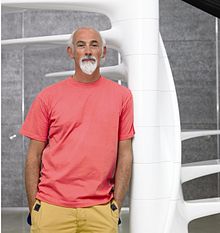
The Centre Pompidou, more fully the Centre national d'art et de culture Georges-Pompidou, also known as the Pompidou Centre in English, is a complex building in the Beaubourg area of the 4th arrondissement of Paris, near Les Halles, rue Montorgueil, and the Marais. It was designed in the style of high-tech architecture by the architectural team of Richard Rogers, Su Rogers, Renzo Piano, along with Gianfranco Franchini.
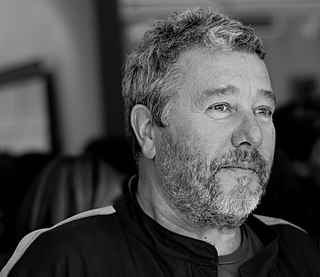
Philippe Starck is a French industrial architect and designer known for his wide range of designs, including interior design, architecture, household objects, furniture, boats and other vehicles.

Mario Bellini is an Italian architect and designer. After graduating from the Polytechnic University of Milan in 1959, Bellini pursued a career as an architect, exhibition designer, product designer, and furniture designer during the Italian economic boom of the late 20th century. Bellini has received several accolades in a variety of design fields, including eight Compasso d'Oro awards and the Gold Medal for Lifetime Achievement by the Triennale di Milano. In 2019, the Italian President of the Chamber of Deputies, Roberto Fico, awarded Bellini a career medal in recognition of his contributions to Italian architecture and design.

The Sacco chair, also called a bean bag chair,beanbag chair, or simply a beanbag, is a large fabric bag, filled with polystyrene beans, designed by Piero Gatti, Cesare Paolini and Franco Teodoro in 1968. The product is an example of an anatomic chair, as the shape of the object is set by the user. “[The Sacco] became one of the icons of the Italian anti-design movement. Its complete flexibility and formlessness made it the perfect antidote to the static formalism of mainstream Italian furniture of the period,” as Penny Spark wrote in Italian Design – 1870 to the Present.

Gaetano Pesce is an Italian architect and a design pioneer of the 20th century. Pesce was born in La Spezia in 1939, and he grew up in Padua and Florence. During his 50-year career, Pesce has worked as an architect, urban planner, and industrial designer. His outlook is considered broad and humanistic, and his work is characterized by an inventive use of color and materials, asserting connections between the individual and society, through art, architecture, and design to reappraise mid-twentieth-century modern life.
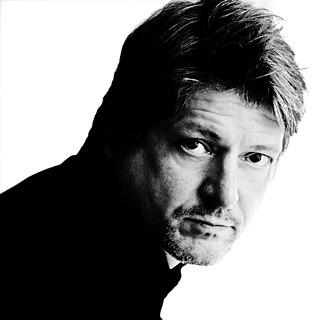
Neil Poulton is a Scottish product designer, based in Paris, France. He specialises in the design of 'deceptively simple-looking mass-produced objects' and has won numerous international design awards. Poulton is best known for his designs in the fields of technology and lighting design and is often associated with manufacturers LaCie and Artemide.
A design museum is a museum with a focus on product, industrial, graphic, fashion and architectural design. Many design museums were founded as museums for applied arts or decorative arts and started only in the late 20th century to collect design.
Alberto Meda is an Italian engineer and designer. His work is held in museums around the world. He works and lives in Milan.
Bodys Isek Kingelez or Jean Baptiste was a Congolese sculptor and artist known for his models of fantastic cities, made of cardboard, paper, tape and other commonplace materials. His work has been presented in numerous exhibitions around the globe, including exhibitions at the Centre Georges Pompidou in Paris and the Museum of Modern Art in New York and at the documenta XI in Kassel.
Ronan & Erwan Bouroullec are brothers noted for their design work, which has been featured in publications and museums globally — and spans a wide range from tables and chairs to tableware, rugs, textile walls, office furniture, ceramics, art objects and urban projects.
Christopher Bauder is a German interaction designer and media artist who lives and works in Berlin. His projects focus on the translation of bits and bytes into objects and environments and vice versa. Space, object, sound, light, and interaction are the key elements of his work.
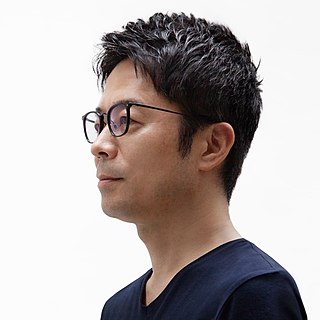
Tokujin Yoshioka is a Japanese designer and artist active in the fields of design, architecture and contemporary art. Some of his works are part of permanent collections in the Museum of Modern Art (MoMA), the Centre Pompidou in Paris, and the Victoria and Albert Museum in London. In 2007, he was named by Newsweek one of the 100 most respected Japanese in the world.
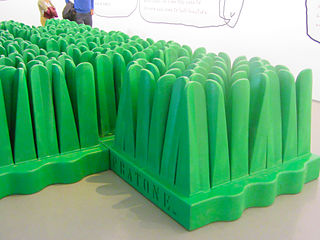
Gufram is an Italian furniture manufacturer known for avant-garde, conceptual, witty, and Pop-art influenced designs; the unconventional use of industrial materials; collaborations with well known architects and designers; and the contribution its products made to the aesthetics of the 1960s Radical period of Italian design.

The Rover chair is the first piece of furniture designed by industrial designer Ron Arad. It was made in 1981 as a fusion of two readymades and launched Arad's career. The chair is a postmodernist design, combining a car seat with a structural tubing frame.

Joris Hendricus Laarman is a Dutch designer, artist, furniture maker, and entrepreneur best known for his experimental designs inspired by emerging technologies. Laarman's projects are a blend of technology, art and design, with a focus on the potential of 3D printing. Major projects include 3D-printed stainless-steel bridge in Amsterdam, which showcases the potential for creating adaptive, lightweight, and uniquely designed structures using 3D printing. Laarman has also explored furniture design, including the 'Bone' series which used 3D-optimization software to achieve optimal construction. The designer's work often evokes a futuristic feel while nodding to historical art movements, exemplified by pieces like his "Digital Matter" series. When Laarman speaks about his work he discussed the implications and responsibilities that come with breakthrough technologies.
Kossi Aguessy was a Togolese and Brazilian industrial designer and artist. He had lived in the United Kingdom, the United States and France.

Arik Levy was born in Tel Aviv. An artist and industrial designer, he attended the Art Center Europe in Switzerland where he graduated with distinction in 1991. Levy employs a multi-disciplinary approach in both the art and industrial design fields. His works have been included in multiple museum collections. Levy lives and works in Paris.

Konstantin Grcic, born 1965, is a German industrial designer known for his design of furniture and household products, some of which have been featured in design shows and museums. His design language is characterized by the use of geometric shapes and unexpected angles.

Andrea Branzi was an Italian architect, designer, and academic. He was born and raised in Florence, though he lived and worked in Milan for much of his career. He was a professor and chairman of the School of Interior Design at the Polytechnic University of Milan until 2009.
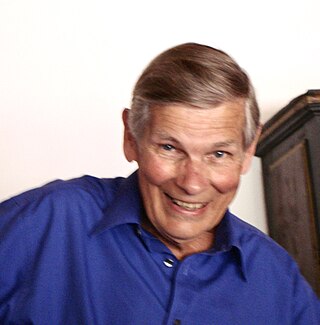
Douglas Forsythe Kelley was an American industrial designer who was known for designing the T-chair and the Elna Lotus sewing machine.
